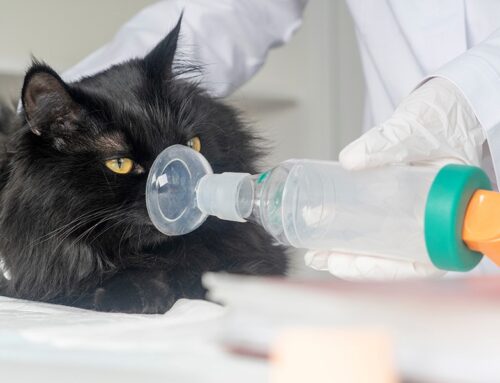Cruciate ligament disease is a common orthopaedic issue in dogs, affecting the stability of the knee joint (stifle).
It can be a painful and debilitating condition, but with prompt diagnosis and appropriate treatment, many dogs can return to an active and happy life.
What is Cruciate Disease?
The cranial cruciate ligament (CCL) in dogs plays a vital role in stabilising the knee joint. Similar to the ACL in humans, the CCL prevents the femur and tibia from sliding excessively against each other. When this ligament is partially or fully torn, it leads to joint instability, pain, and inflammation.
Clinical Signs of Cruciate Disease
Dogs with cruciate ligament injuries may show:
- Limping or lameness: Sudden or chronic, often in one hind leg.
- Difficulty rising or jumping: Dogs may struggle with activities requiring knee flexibility.
- Swelling around the knee: Inflammation from joint instability can cause visible puffiness.
- “Toe-touching” gait: The affected leg may barely bear weight.
- Muscle wastage: Prolonged disuse of the leg can lead to reduced muscle mass.
Diagnosing Cruciate Disease
Diagnosis involves a combination of physical examination and diagnostic imaging:
- Orthopaedic exam: A veterinarian may perform a “cranial drawer test” or a tibial thrust test to assess joint stability.
- X-rays: While ligaments don’t appear on X-rays, imaging can reveal secondary changes like joint effusion or arthritis seen with cruciate disease.
Treatment Options
The treatment approach depends on the dog’s size, activity level, and severity of the injury.
- Conservative Management (best for smaller dogs or partial tears):
- Strict rest and controlled exercise.
- Pain relief medications and anti-inflammatories.
- Joint supplements or therapeutic diets to support joint health.
- Surgical Intervention:
-
- Lateral suture stabilisation: Often used for smaller dogs, this method uses a synthetic material to mimic the ligament’s function.
- Tibial Plateau Leveling Osteotomy (TPLO): Considered the gold standard treatment for cruciate ligament disease, TPLO is highly effective, particularly for larger or more active dogs. At Forestside Veterinary Clinic, we are proud to offer this advanced procedure.
How is a TPLO Performed?
The TPLO surgery involves altering the biomechanics of the knee joint to stabilise it without relying on the damaged ligament.
- Preoperative preparation: Your dog will be anaesthetised, and X-rays will be taken to measure the tibial plateau angle (the slope of the tibia).
- Bone realignment: A semi-circular cut is made in the tibia, allowing the surgeon to rotate the top portion of the bone. This rotation eliminates the forward thrust of the tibia when weight is placed on the leg.
- Stabilisation: A specially designed plate and screws are used to secure the tibia in its new alignment.
- Post-surgical X-rays: These ensure the alignment and fixation are correct.
TPLO surgery typically results in faster recovery times, reduced arthritis progression, and a return to near-normal function for most dogs.
Post-operative Care
Recovery from TPLO surgery requires commitment from pet owners:
- Strict rest and leash-only walks during the initial healing phase (6–8 weeks).
- Follow-up X-rays to confirm bone healing.
- Gradual reintroduction to activity with physiotherapy and controlled exercise.
- Weight management and joint supplements to promote long-term joint health.
Preventing Cruciate Disease
While some factors like genetics can’t be controlled, maintaining a healthy weight and providing regular, low-impact exercise can significantly reduce the risk.
If your dog shows signs of cruciate ligament disease, early intervention is crucial. Forestside Veterinary Clinic offers expert diagnostics and advanced surgical treatments, including TPLO, to ensure your pet receives the best possible care. Contact us to learn more or schedule a consultation.



